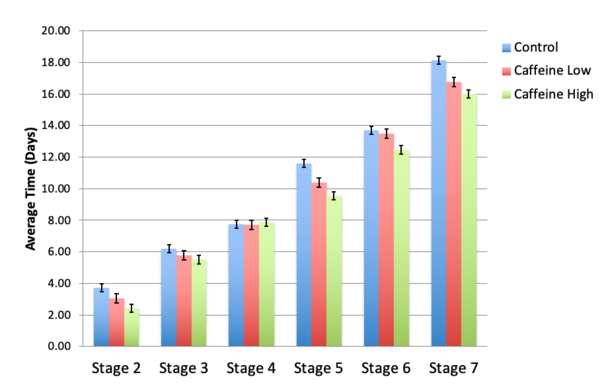The Effect of Caffeine on the Regeneration of Brown Planaria (Dugesia tigrina)
(1) Phillips Exeter Academy, Exeter, New Hampshire
https://doi.org/10.59720/18-061
Planaria are considered the most primitive form of cephalized animal with similarity to vertebrate nervous systems. They possess nearly every neurotransmitter present in most mammals, including dopamine. Planaria are known for their extraordinary ability to regenerate from a small tissue fragment, making planaria an ideal model to study the nervous system. Planaria have pluripotent somatic stem cells known as neoblasts. Following amputation, neoblasts increase their rate of return and migrate to the wound site. They then give rise to a mass of new tissue called the blastemal. Cells in the blastemal differentiate over a period of several days to replace missing body structures. Previous research compared scoring methods of neurotoxicity on the neurological, locomotive, and morphological functions of planarian. High levels of dopamine have been found in regenerating planaria, indicating that dopamine may have a role in regeneration. Caffeine enhances dopamine signaling in the brain. Therefore, this study aimed to explore the effect of caffeine on the regeneration rate of planaria. In this study, twenty one planaria were exposed to two concentrations of caffeine. The heads were amputated, and regeneration was recorded by digital photography. The study showed that the highest dosage of caffeine accelerated the regeneration rate of the planaria in comparison to the lower dosage and control. The planaria treated with the lower caffeine dosage also regenerated in less time than the control specimen. This study is evidence that a high dose of caffeine accelerates planaria regeneration and implicates caffeine as a possible treatment to stimulate the regeneration process.
This article has been tagged with: